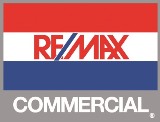
Photo Credit: kenteegardin via Compfight cc
There is the old anecdote about the immigrant who opened his own business in the United States. Like many small business owners, he had his own bookkeeping system. He kept his accounts payable in a cigar box on the left side of his cash register, his daily receipts – cash and credit card receipts – in the cash register, and his invoices and paid bills in a cigar box on the right side of his cash register.
When his youngest son graduated as a CPA, he was appalled by his father’s primitive bookkeeping system. “I don’t know how you can run a business that way,” his son said. “How do you know what your profits are?”
“Well, son,” the father replied, “when I came to this country, I had nothing but the clothes I was wearing. Today, your brother is a doctor, your sister is a lawyer, and you are an accountant. Your mother and I have a nice car, a city house and a place at the beach. We have a good business and everything is paid for. Add that all together, subtract the clothes, and there’s your profit.”
A commonly accepted method to price a small business is to use Seller’s Discretionary Earnings (SDE). The International Business Brokers Association (IBBA) defines SDE as follows:
Discretionary Earnings – The earnings of a business enterprise prior to the following items:
- income taxes
- nonrecurring income and expenses
- non-operating income and expenses
- depreciation and amortization
- interest expense or income
- owner’s total compensation for one owner/operator, after adjusting the total compensation of all other owners to market value
Here are some terms as defined by the IBBA:
- Owner’s salary – The salary or wages paid to the owner, including related payroll tax burden.
- Owner’s total compensation – Total of owner’s salary and perquisites.
- Perquisites – Expenses incurred at the discretion of the owner which are unnecessary to the continued operation of the business.
Developing a Multiplier
Once the SDE has been calculated, a multiplier has to be developed. The following (just as a guideline) should be rated from 0 to 5 with 5 being the highest. For example, if the business is a highly desirable business in the current market, “desirability” would be rated a 4 or 5. If the business is in an industry that is quickly declining or nearly obsolete, “industry” would be given a 0 or 1 rating.
- Age: Number of years the seller has owned and operated the business.
- Terms: Is the seller willing to offer terms? For example, will the seller accept 40 percent as a down payment with the seller carrying back 60 percent at terms the business can afford while still providing a living for the buyer?
- Competition: Consider the local market.
- Risk: Is the business itself risky?
- Growth trend of the business: Is it up or down?
- Location/Facilities
- Desirability: How popular is the business in the current market?
- Industry: Is the industry itself declining or growing?
- Type of business: Is the business type easily duplicated?
The average business sells for about 1.8 to 2.5. Obviously, if the SDE is solid and the multiple is above average, the price will be higher. Keep in mind that the price outlined includes all of the assets including fixtures and equipment, goodwill, etc. It does not include real estate or saleable inventory. The price determined above assumes that the business will be delivered to the buyer free and clear of any debt.
Veteran Wisdom
When all else fails, the words of a veteran business broker will work.
Asking Price is what the seller wants.
Selling Price is what the seller gets.
Fair Market Value is the highest price the buyer is willing to pay and the lowest price the seller is willing to accept.
Sellers should keep in mind that the actual price of a small business is about 80 percent of the seller’s asking price.


